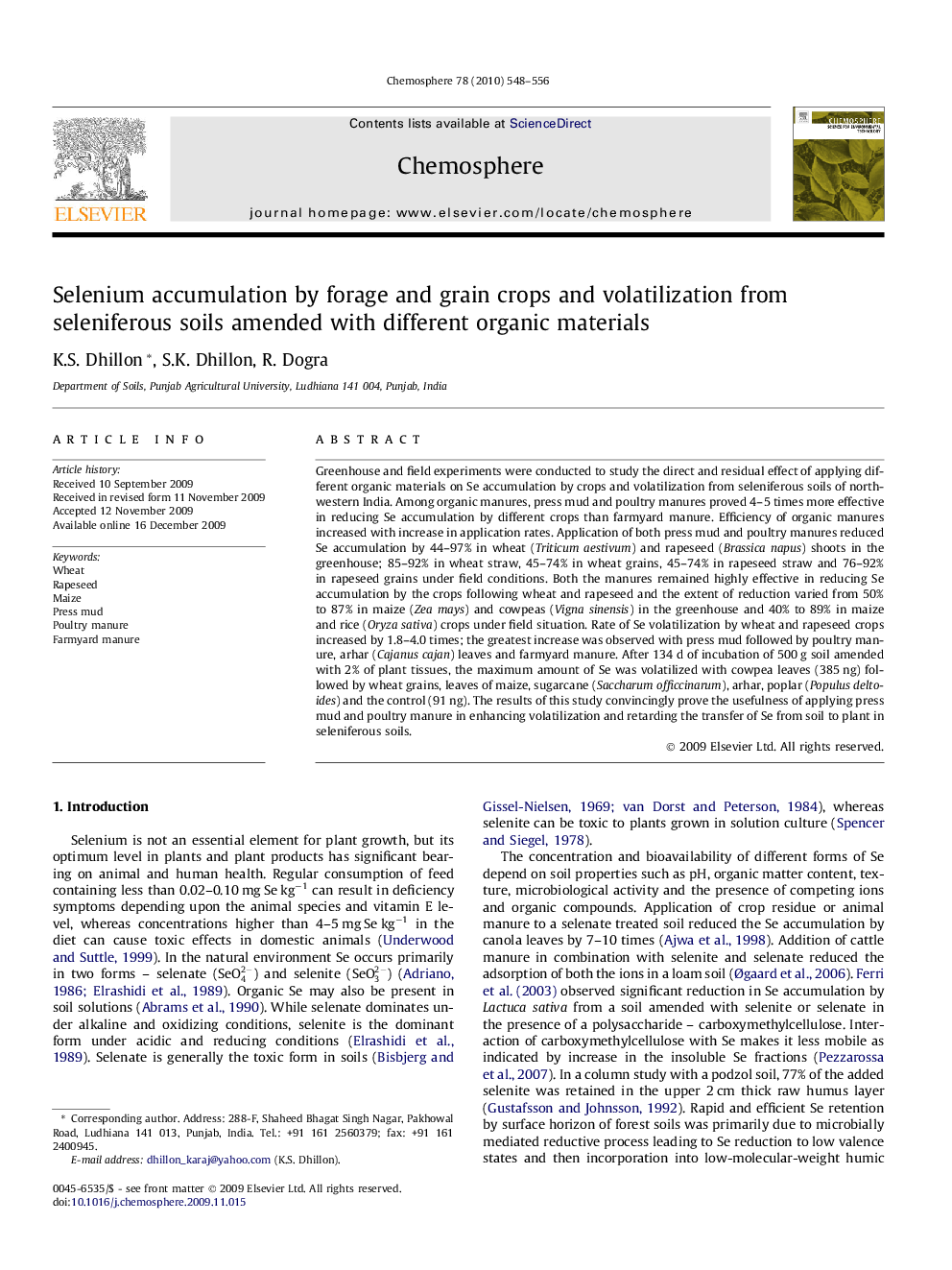| Article ID | Journal | Published Year | Pages | File Type |
|---|---|---|---|---|
| 4412270 | Chemosphere | 2010 | 9 Pages |
Greenhouse and field experiments were conducted to study the direct and residual effect of applying different organic materials on Se accumulation by crops and volatilization from seleniferous soils of northwestern India. Among organic manures, press mud and poultry manures proved 4–5 times more effective in reducing Se accumulation by different crops than farmyard manure. Efficiency of organic manures increased with increase in application rates. Application of both press mud and poultry manures reduced Se accumulation by 44–97% in wheat (Triticum aestivum) and rapeseed (Brassica napus) shoots in the greenhouse; 85–92% in wheat straw, 45–74% in wheat grains, 45–74% in rapeseed straw and 76–92% in rapeseed grains under field conditions. Both the manures remained highly effective in reducing Se accumulation by the crops following wheat and rapeseed and the extent of reduction varied from 50% to 87% in maize (Zea mays) and cowpeas (Vigna sinensis) in the greenhouse and 40–89% in maize and rice (Oryza sativa) crops under field situation. Rate of Se volatilization by wheat and rapeseed crops increased by 1.8–4.0 times; the greatest increase was observed with press mud followed by poultry manure, arhar (Cajanus cajan) leaves and farmyard manure. After 134 d of incubation of 500 g soil amended with 2% of plant tissues, the maximum amount of Se was volatilized with cowpea leaves (385 ng) followed by wheat grains, leaves of maize, sugarcane (Saccharum officcinarum), arhar, poplar (Populus deltoides) and the control (91 ng). The results of this study convincingly prove the usefulness of applying press mud and poultry manure in enhancing volatilization and retarding the transfer of Se from soil to plant in seleniferous soils.
